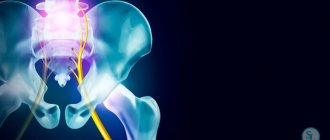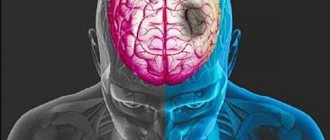Myotonia is not a disease, but a symptom of a group of muscle disorders, which are characterized by an impairment of the muscle’s ability to relax after contraction. For most people, a myotonic attack is temporary and manifests itself as severe stiffness that occurs after performing a certain type of movement. The inability of tight muscles to relax and difficulty getting up from a sitting position are the most common manifestations of a myotonic attack.
The duration of a myotonic attack can last from seconds to minutes and range in intensity from mild discomfort to severe impairment of motor abilities. Typically, a myotonic attack occurs after intense physical activity or after a long period of rest, but sometimes occurs as a reaction to low temperatures or even a sharp sound.
With myotonia, only the skeletal muscles that perform voluntary movements are involved. Thus, a myotonic attack can only occur when performing conscious movements, but does not affect the heart muscle or the muscular structures of the digestive tract. Depending on the type and severity, myotonia can affect the legs, face, arms, shoulders, feet, eyelid muscles, and even the ability to speak clearly.
As a rule, myotonic syndromes are genetically determined and can affect any person. Myotonic disorders can affect both women and men, and any age can have symptoms of myotonic attacks. Depending on the severity of myotonic symptoms, the first signs of these disorders may appear in adolescence or adulthood. Inheritance of myotonic syndromes occurs in two ways: an autosomal dominant genetic pattern or an autosomal recessive genetic pattern.
Autosomal dominant inheritance
Disorders associated with autosomal dominant inheritance usually appear in every generation without exception. Autosomal means that the genetic error can be located on any chromosome, in every cell of the body, with the exception of sex chromosomes. Dominant means that one parent who is a carrier of the defective gene is enough to transmit the disease by inheritance. And since disorders can be passed on by either parent, any child of a parent with a genetic defect has a 50% chance of inheriting the disorder. The severity of the disorder and age of onset may vary depending on the individual.
Autosomal recessive inheritance
In autosomal recessive inheritance, the disease appears in one generation and usually without a family history of the condition. Both parents can be carriers of this gene. A carrier of the defective gene may not experience any symptoms. Recessive means that for the gene and disease to manifest, both parents must have the defective gene. Children of both sexes can inherit the defective gene using this type of inheritance. With each pregnancy, 25% of children have a chance of inheriting the defective gene from both parents. If a child inherits a defective gene from one parent, he or she will be a carrier of the defective gene, but most likely will not experience symptoms. In 50% of cases the child will be a carrier of the gene. At the same time, the probability that the child will not inherit the defective gene and will not be a carrier and will not have clinical manifestations is 25%.
Classification of myotonia
According to the common classification, the following types of myotonia are distinguished:
- congenital myotonia, known as Thompson's disease;
- cold paramyotonia (Eilenburg disease);
- atrophic myotonia (Rossolimo-Batten-Steinert-Kurshman disease; dystrophic myotonia);
- paradoxical myotonia;
- Schwartz-Jampel syndrome.
In addition, there is a classification based on the etiological factors that trigger the development of the myotonic phenomenon. Based on this classification, the following are distinguished:
- percussion myotonia;
- action myotonia;
- electromyographic myotonia.
Patients with percussion syndrome experience muscle contractions when struck vigorously with a hammer. With myotonia of action, the patient feels difficulty when trying to quickly clench and unclench a fist. In the case of electromyographic myotonia, when performing an electromyogram, discharges are detected, the frequency of which first increases and then decreases. In this situation, the phenomenon of myotonia is caused by worsening membrane instability in the muscle fiber structure.
Treatment
Currently, there are no treatment methods that can completely get rid of any myotonic syndrome . Treatment is symptomatic. If myotonic attacks become intense, it becomes necessary to use medications to reduce symptoms. The most well-known drug is mexilitene, as well as drugs such as guanine, procainamide, tegretol, phenytoin. But all these drugs have a lot of side effects and therefore their long-term use is not advisable. It is most optimal when the patient knows the factors that provoke myotonic attacks and tries to avoid provoking situations whenever possible, and after the attacks allows the muscles to recover through rest.
Etiology and pathogenesis of myotonia
The main etiological factor provoking the development of myotonia is autosomal dominant or autosomal recessive hereditary transmission. Often this disease occurs as a result of consanguineous marriage.
Muscle dysfunction in myotonia is provoked by a disorder of cell membrane permeability, changes in mediator and ion metabolism.
The pathogenesis of atrophic myotonia is represented by a dysregulation of the hypothalamic-pituitary system. During a pathomorphological examination, changes in muscle tissue are diagnosed. Histological examination allows us to specify the decrease in size and increase in the number of type I fibers.
Symptoms
The main symptoms of myotonia include:
- delayed relaxation of muscles after contraction;
- muscle stiffness;
- true muscle hypertrophy;
- phenomena and increased mechanical excitability of muscles;
- muscle tone disorders;
- decreased muscle strength;
- tightening pain of varying intensity (from mild to unbearable), which disappears after rest, rubbing, kneading the muscles - especially at the beginning of the development of the disease, in the future - even after manipulation and rest, a feeling of heaviness and “fullness” of the muscles remains;
- a decrease in muscle strength and endurance, mainly during static efforts, a decrease in the bioelectrical activity of muscles during voluntary contractions and their increase at rest.
It is important to know that taking Succinylcholine , Veroshpiron , potassium, antihyperlipidemic drugs and adrenergic blockers increases myotonic syndrome.
Despite the fact that the mechanisms and likelihood of neurological disorders in myotonic syndromes have been little studied, patients often experience a tendency to hypersomnia, apathy , mental retardation and an increase in dementia .
Clinical picture of myotonia
The clinical manifestations of this disease depend on its form. With congenital myotonia, in most cases, the first symptoms appear in childhood (10-12 years). A child with congenital myotonia develops a change in voice that is noticeable when crying. The child is subjected to an attack of suffocation, and after he calms down and stops crying, the facial muscles gradually relax. At older ages, patients develop a typical myotonic phenomenon. Patients often complain of local muscle hypertonicity, which is accompanied by normal muscle contraction and difficult muscle relaxation. This is caused by a spasm or characteristic muscle contracture. These difficulties are in most cases localized in the masticatory muscles, hands and fingers, and in severe cases, all muscle groups can be affected.
During the examination of the patient, signs of mechanical hyperexcitability of the muscles are visualized. After a blow with a hammer, a deformation in the form of a pit or ridge may be present on the affected muscle for 1-1.5 minutes. In the process of gradation of the disease, patients with congenital myotonia develop muscle hypertrophy, against the background of which an athletic physique is formed. At the same time, the patient’s appearance does not correspond to muscle strength; as a rule, it is significantly lower.
Intensification of symptoms occurs under the influence of cold or excessive physical exertion. In women, the clinical picture may worsen during pregnancy.
Thompson's myotonia in most cases is characterized by a mild course, and in some patients the symptoms weaken with age.
The first symptoms of atrophic myotonia occur in patients aged 15-35 years. The onset of the disease is accompanied by myotonic syndrome, which subsides over time as atrophy and paresis develop. After the myotonic syndrome subsides, patients experience a gradation of myopathic symptoms. Along with muscle atrophy, there is a decrease in muscle strength. Initially, this type of myotonia is characterized by atrophy of the muscles of the face, neck, and masticatory muscles; over time, the muscle structures of the upper and lower extremities are involved in the pathological process.
With atrophy of the masticatory muscles, retraction of the cheeks and temporal fossae is visualized. The spread of the process of muscle atrophy in the neck area is indicated by throwing the head back or forward. During the examination, pathological changes in the muscles of the upper and lower extremities and decreased tendon reflexes are noted.
The endocrine system suffers, which manifests itself in dysfunctional disorders of the gonads, thyroid gland, adrenal glands and pituitary gland. Patients experience loss of teeth, hair, weight loss and thinning of the skin. From the cardiovascular system, there is a high risk of developing bradycardia, arrhythmia, meter valve prolapse, and hypotension. In some cases, the central nervous system is affected, which manifests itself in mental disorders of varying degrees.
The development of Eidenburg's congenital paramyotonia most often occurs as a result of cold exposure. In this case, the patient feels myotonic difficulty in muscle relaxation. Hypothermia can be local or general. In the case of local hypothermia, when the patient eats food that is too cold, a muscle spasm occurs, which manifests itself in the form of myotonic contracture in the tongue and pharynx, which is eliminated by warming. If hypothermia is of a general nature, a typical myotonic phenomenon develops, and some patients experience muscle weakness, “cold paralysis.” This form of myotonia may regress over time.
Scientists have not established a clear hereditary predisposition in patients with paradoxical myotonia. This disease is extremely rare and its characteristic symptom is a typical myotonic spasm, but which, unlike other myotonic spasms, does not weaken with repeated movements, but rather increases.
The first manifestations of Schwartz-Jampel syndrome occur in early childhood. Visually, this disease is evidenced by the child’s short neck, chest deformation, scoliosis, the child lags behind his peers in growth, but his intelligence remains normal. An objective examination reveals painful muscle contractions of various locations.
Diagnostics
Even based on a physical examination, the doctor may perform certain diagnostic tests, such as the myotonic response to exercise , cold exposure, or other stimulation. But it is very important to differentiate these myotonias from progressive diseases, such as myotonic dystrophies. And for differential diagnosis, special research methods are required. These studies include EMG, which measures the electrical activity of muscle tissue; laboratory tests (blood tests and DNA analysis) muscle biopsy, which is sometimes necessary for the final diagnosis of muscle disease.
Differential diagnosis
The essence of the differential diagnosis of myotonia is to determine the form of this disease. To distinguish the congenital form of myotonia from the dystrophic one, an analysis of clinical manifestations will be required. But sometimes with congenital myotonia, mild weakness of the distal muscles of the upper limbs and weak activity on EMG are detected, which is represented by a symptom of dystrophic myotonia. Continuous muscle activity may indicate neuromyotonia; this symptom is also included in the symptom complex of a rigid person. A distinctive feature of rigid person syndrome is a decrease in muscle activity during sleep and after the administration of diazepam.
Forms of the disease
If left untreated, even moderate myotonic syndrome can lead to poor posture, dysfunction of the joints, disruption of the gastrointestinal tract, biliary tract, and chronic constipation (due to damage to the muscles of the anterior abdominal wall).
A weakening of muscle tone may be accompanied by urinary incontinence, the development of myopia, curvature of the spine, and osteochondrosis. Patients with myotonic syndrome experience the appearance of intense headaches, as a result of which the psyche is disturbed and the ability to work is reduced.
Myotonia can be congenital - have a genetic character. In this case, the appearance of genomic pathology is associated with damage to one or another part of the brain. Myotonic syndrome can occur in people of any age and gender. The duration of a myotonic attack is several seconds or minutes. The intensity of the attack also varies - some patients may experience discomfort, while others may experience painful dysfunctional disorders. The development of a myotonic attack can be caused by physical overexertion, long rest, cold exposure, sharp and loud sounds.
There is also an acquired form of myotonia. It occurs due to injuries received during childbirth, metabolic disorders, and after suffering from rickets. Infants cannot unclench their fingers when trying to grasp an object; they have a weak sucking reflex. Older children have difficulty raising their bodies after falls and playing outdoor games.
To select a competent method of treating myotonic syndrome, specialists at the Yusupov Hospital conduct a preliminary comprehensive examination of patients, allowing them to identify the cause that triggered the development of this pathology.
Diet for myotonic syndrome
Diet number 12
- Efficacy: therapeutic effect after 2-3 weeks
- Terms: 21 days or more
- Cost of food: 1590-1680 rubles per week
Following a diet and special recommendations can reduce the intensity of myotonia. Patients are advised to avoid nervous tension and outbursts, heavy physical exertion, hypothermia and prolonged positions in static positions. Nutrition should be balanced and varied, appropriate to the patient’s weight, age and gender. The diet is usually based on meat, fish, cereals, fruits, vegetables and herbs.
For Rossolimo-Steinert-Kurshman myotonia, diet therapy includes limiting the amount of potassium in food.









